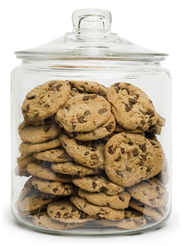Organic Vs Non Organic Food Products
“For a product to be labeled as “Organic”, only 95% of the ingredients must be organic. Some non-organic ingredients, including additives, are so essential that they are permitted in organic food.”
What food products can be labeled as “organic”?
Under NPOP system:
- In case of single ingredient product where all requirements have been met it can be labeled as ‘Organic’.
- In case of multi ingredient product where minimum 95% of ingredients are of certified origin it can be labeled as ‘Certified Organic’.
Under PGS-India system:
- In case of single ingredient product where all requirements have been met it can be labeled as ‘PGS- Organic’.
- In case of single ingredient product where minimum 95% of ingredients are organic it can be labeled as ‘PGS- Organic’.
Additives common in organic & non Organic food
01. E330- Citric Acid
02. E440- Pectin
03. INS 500 (ii) – Sodium Hydrogen Carbonate
Organic vs. Non Organic Muesli
If you pick up an organic Muesli box& a non-organic muesli box from the aisle of a supermarket, you’ll realize that they both have almost same shelf life (9 months in most cases). The nature of the ingredients used, whether they are organic or non-organic, does not affect the shelf life of the end product.

Organic vs. Non Organic Fruit Juices
Most of the organic and non-organic fruit juices, available in the market, have same shelf life (6 months in most cases). E330 (Citric Acid), an acidity regulator and E440 (Pectin), a stabilizer are some of the additives commonly found in both organic and non-organic fruit juices. Also, some of the organic juices, available in supermarkets and online retail store do use E235 (Natamycin), a natural preservative, in addition to E330 & E440.
“Natamycin (pimaricin) is a polyene macrolide antibiotic produced by submerged aerobic fermentation of Streptomyces natalensis and related species. Fermentation is conducted for several days, and the antibiotic is isolated either by broth extraction or by extraction of the mycelium. It is used as a food additive to control the growth of yeasts and moulds on the surface of cheese and other non-sterile products, such as meat and sausages.”
Organic vs. Non Organic Biscuits
Biscuits made with organic ingredients and non organic ingredients can have the same shelf life. The shelf life mainly depends on the composition, the formulation and the processing techniques. Food additive INS 500 (ii) (Sodium Hydrogen Carbonate), a popular raising agent, can be found both in organic and non-organic biscuits or cookies.

Organic vs. Non Organic Jowar Puffs
On comparing between organic Jowar/ sorghum puffs and non organic puffsavailable at an online grocery store, it was observed that organic puffs claim a shelf life of 3 months from packaging and non- organic puffs claim a shelf life of 6 months from manufacturing. For organic puffs, the time difference between manufacturing and packaging is not defined. Hence a definitive conclusion could not be drawn because of the ambiguity in the labels.

Organic vs. Non-Organic Fruit Jam
Most of the organic and non-organic fruit jams available in a supermarket or at an online retail store claim to have same shelf life (12 months in many cases). Many organic jam manufacturers use citric acid as an acidity regulator and pectin as a stabilizer. Apart from citric acid and pectin, non-organic fruit jam manufacturers use E211 (Sodium Benzoate), E 233 (Sodium metabisulfite) or E202 (Potassium Sorbate) as preservatives.


